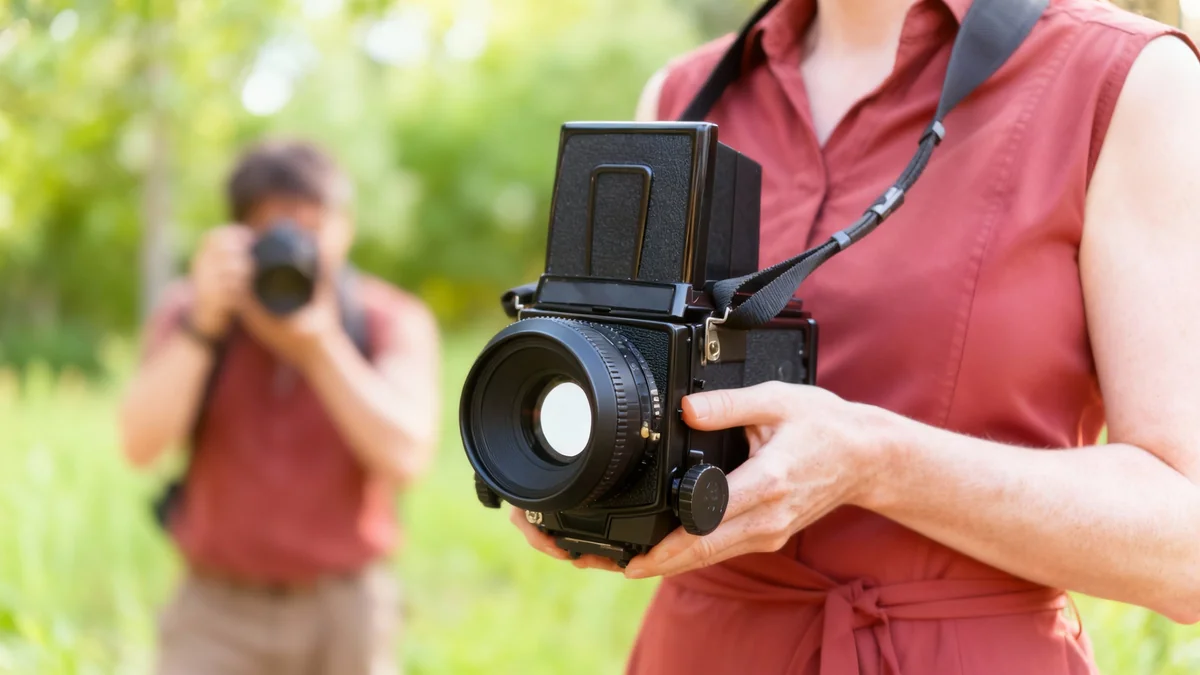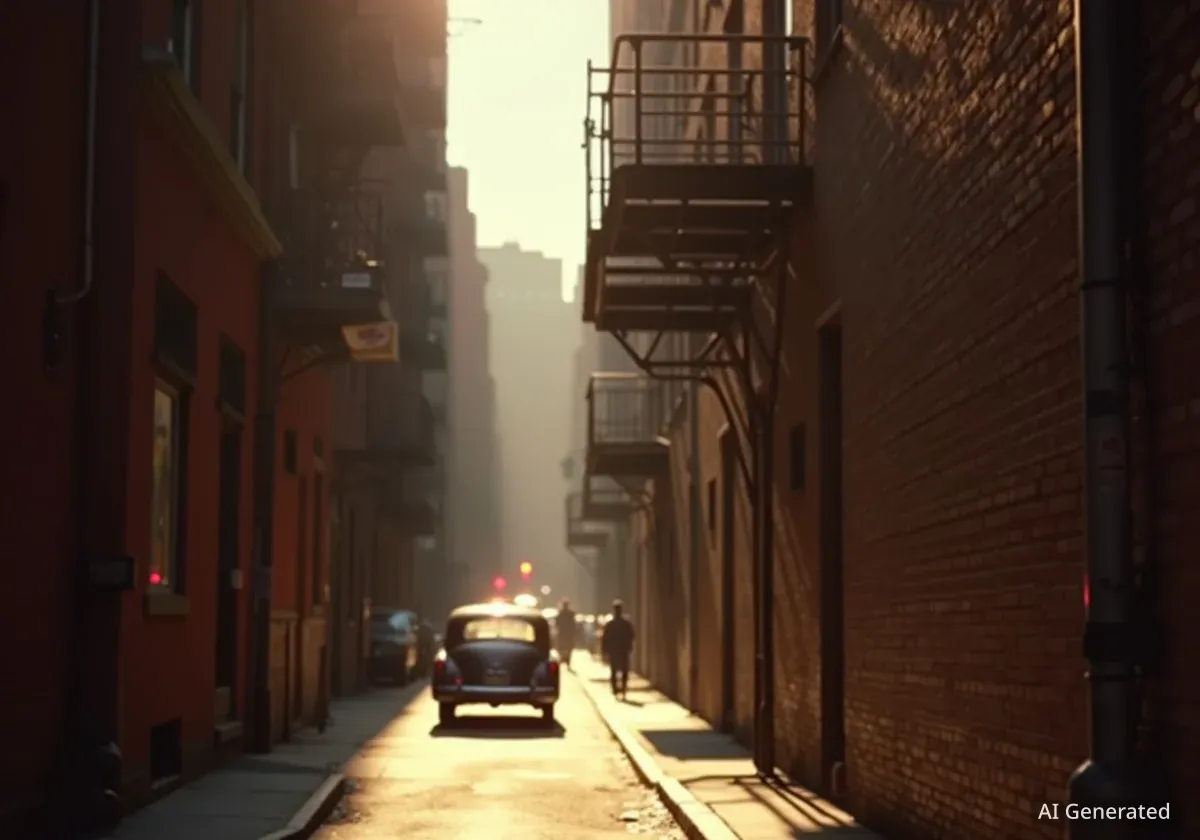Medium format photography, once a cornerstone of professional imaging, experienced a dramatic decline with the rise of digital technology. However, a surprising resurgence has seen it reclaim a unique position in the modern photographic landscape. This comeback is not driven by the same technical necessities of its golden age, but rather by a new appreciation for craft, aesthetic distinction, and a deliberate approach to image-making.
Key Takeaways
- Medium format dominated professional photography from the 1950s to 1970s due to superior film area and image quality.
- The format declined as 35mm film cameras gained speed and convenience, and digital cameras emerged.
- Digital medium format was initially prohibitively expensive, leading to a near extinction for most photographers.
- Pentax pioneered more accessible digital medium format cameras in the 2010s, proving market viability.
- Fujifilm and Hasselblad democratized digital medium format, making it aspirational and affordable for a wider audience.
- Its current appeal lies in distinctive image rendering and a more intentional photographic process, rather than just technical resolution.
The Golden Age of Medium Format
From the 1950s through the 1970s, medium format cameras were the undisputed standard for professional photographers. The fundamental reason was simple physics: a frame of 120 film, typically 6x6 cm or 6x7 cm, offered significantly more surface area than 35mm film. This larger area translated directly into superior image quality.
Photographers noted sharper detail, smoother tonal gradations, and richer color depth. These were not just marketing claims; they were measurable differences visible in every commercial print, fashion spread, and portrait. The quality gap was undeniable and critical for high-end work.
Fact Check
A 6x6 cm medium format film frame has approximately three to four times the surface area of a standard 35mm film frame, providing a substantial advantage in image fidelity.
Studios in the 1960s were filled with iconic medium format cameras. Hasselblads, known for their modular design and Carl Zeiss lenses, were prevalent. Rolleiflex twin-lens reflex cameras were favored by street photographers seeking quality without drawing attention. Mamiya systems offered large film sizes without the bulk of even larger formats.
"If you walked into a professional studio in 1965, you'd see medium format cameras everywhere. These cameras defined what professional photography looked like, both literally and culturally."
The commitment to medium format tools signaled a photographer's seriousness to clients. The quality of the negatives confirmed it. Even NASA adopted modified Hasselblad cameras for space missions, including the Apollo lunar surface photography, underscoring the format's reliability and image integrity.
The Decline and Digital Disruption
The dominance of medium format began to erode in the 1980s and 1990s. Advances in 35mm film emulsions, such as Fuji Velvia in 1990, helped narrow the quality gap. More significantly, 35mm cameras evolved rapidly in features and speed. Autofocus became standard in the late 1980s, motor drives accelerated, and lenses became sharper and more versatile.
While medium format eventually gained autofocus with cameras like the Pentax 645N in the late 1990s, 35mm had already established its advantage in responsiveness and intuitive operation. Photography's aesthetic shifted towards capturing spontaneous moments rather than carefully constructed scenes.
Changing Aesthetics
The demand for faster, more immediate photography in fashion and editorial work pushed 35mm to the forefront. The slight grain and spontaneous feel of 35mm images began to be perceived as more authentic and alive compared to the often stiff, overly perfect look of older medium format photography.
The true blow came with the advent of digital photography in the 2000s. Full-frame DSLRs from Canon and Nikon, costing around $3,000, produced files that could be extensively manipulated in Photoshop. This innovation made the economic argument for traditional medium format untenable for many.
Digital medium format systems did exist, but their prices were astronomical. Early complete systems often exceeded $100,000. Even by the mid-2000s, digital backs from Phase One and Hasselblad were in the $25,000 to $40,000 range. These were investments only justifiable for niche applications like museum reproduction or high-end commercial advertising.
The Zombie Years and a Faint Pulse
For nearly a decade, from the late 2000s to the early 2010s, medium format photography entered what some called its "zombie years." It existed at two extremes: ultra-high-end professional use and niche artistic endeavors.
Phase One and Hasselblad continued to develop digital backs for a microscopic market of clients needing massive files for billboards or museum archives. Simultaneously, a small community of film photographers, like Michael Kenna, kept film medium format alive through artistic commitment, valuing the slow, contemplative process it encouraged.
During this period, used Hasselblad 500 series bodies, once costing thousands, could be found for a few hundred dollars. Medium format was largely irrelevant to the mainstream, admired but impractical for the vast majority of working photographers.
However, a crucial shift began around 2010. Pentax made a bold move by releasing the Pentax 645D in Japan, followed by international availability in 2011. This digital medium format camera launched at around $10,000, quickly settling to $7,000-$8,000. While not cheap, it was significantly more accessible than competing digital backs.
Pentax Pioneers
The Pentax 645D, launched in 2010, was a 40-megapixel, weather-sealed complete camera system. It offered a digital medium format option for landscape and portrait photographers who had previously relied on film, proving a market existed for more affordable systems.
In 2014, Pentax refined this concept with the 645Z, featuring a 51-megapixel sensor, improved autofocus, and better high-ISO performance, priced around $8,500. These cameras were proof of concept, demonstrating that digital medium format could exist outside the ultra-elite. Yet, Pentax lacked the marketing power to ignite a broader movement.
The Resurrection: Fujifilm and Hasselblad Lead the Charge
The true resurrection of medium format began around 2016, when Fujifilm and Hasselblad entered the market with new, more accessible digital systems. Hasselblad announced the X1D in mid-2016, and Fujifilm followed with the GFX 50S later that year.
The Fujifilm GFX 50S, arriving in early 2017, had a body price of $6,500. With a lens, a complete system could be purchased for under $10,000. This was a game-changer. It was not just a larger sensor; it represented a new philosophy about image quality and a distinctive aesthetic.
- Retro-Modern Design: The GFX offered a design that felt both serious and approachable.
- Fujifilm Color Science: It leveraged Fujifilm's reputation for excellent color rendering.
- Market Momentum: Crucially, it created a sense of a new beginning for the format.
The competition quickly intensified, leading to further price drops and expanded lens selections. By 2019, the Fujifilm GFX100 introduced in-body image stabilization and video capabilities, making medium format feel genuinely modern.
Affordable Aspirations
By late 2018, the Fujifilm GFX 50R was available for approximately $4,000, transforming medium format from an exclusive professional tool into an aspirational choice for a wider range of photographers.
This market shift inverted previous trends. Full-frame digital cameras had become so ubiquitous that they no longer offered a unique differentiator. Medium format provided that distinction, appealing to photographers who sought a different feel in their work.
Why Medium Format Came Back
The reasons for medium format's return are different from its original dominance. In the film era, it was about superior detail. Today, it is about a distinctive rendering and photographic experience.
Modern digital medium format sensors, typically 44x33 mm, offer smoother tonal transitions, a subtle three-dimensionality, and a more natural depth of field fall-off. These qualities are less about technical reproduction and more about aesthetic distinction. Fujifilm's film simulations further contribute to a unique color science.
The format encourages a more deliberate working style. The cameras are generally larger and heavier, and the files are bigger, prompting photographers to think carefully before each shutter press. In an age of automated photography, medium format emphasizes craft and intentionality.
"In an age of computational photography and AI-assisted everything, shooting medium format is a statement about craft and intentionality. For photographers drowning in automation and infinite options, it feels real in a way that's increasingly rare."
Technological advancements have also made it less challenging to use. Modern digital medium format cameras now feature autofocus, image stabilization, and reasonable ISO performance. In-body stabilization, introduced with cameras like the Fujifilm GFX100, allows for handheld shooting in available light, something previously difficult.
Surprisingly, social media has also played a role. While the technical advantages are often lost on compressed platforms like Instagram, sharing medium format images has become a cultural signal. It communicates a photographer's commitment to craft and quality, even if the final platform cannot fully display those differences. The camera itself has become part of a photographer's identity.
The New Medium Format Photographer
Today's medium format user differs significantly from those in the 1970s. It is less about commercial necessity and more about creative distinction. Landscape photographers appreciate the deliberate pace, portrait photographers use it to differentiate their work, and fine art photographers align their process with their aesthetic vision.
The cameras have evolved to match this new market. They are more portable and adaptable than their film predecessors. Fujifilm's GFX system offers versatile zooms and fast prime lenses. Hasselblad produces compact medium format cameras that blend modern design with high performance.
Medium format photography has fractured into various tiers, from used digital bodies that are more affordable than new full-frame cameras to cutting-edge systems that still command premium prices. This accessibility means the format is no longer solely for the ultra-elite.
The resurgence of medium format suggests a broader trend in photography. While smaller, faster, and more automated cameras continue to advance, there is a strong countercurrent. Many photographers seek tools that encourage deliberation, offer distinctive character, and resist the homogenization of computational photography.
Medium format will likely not return to being the default professional format. Its value now lies in being a distinct alternative, offering a different way of seeing and creating images that stand out. Its comeback proves that photographers sometimes prioritize a unique process and aesthetic over pure convenience, reminding us that obsolescence is not always permanent.




